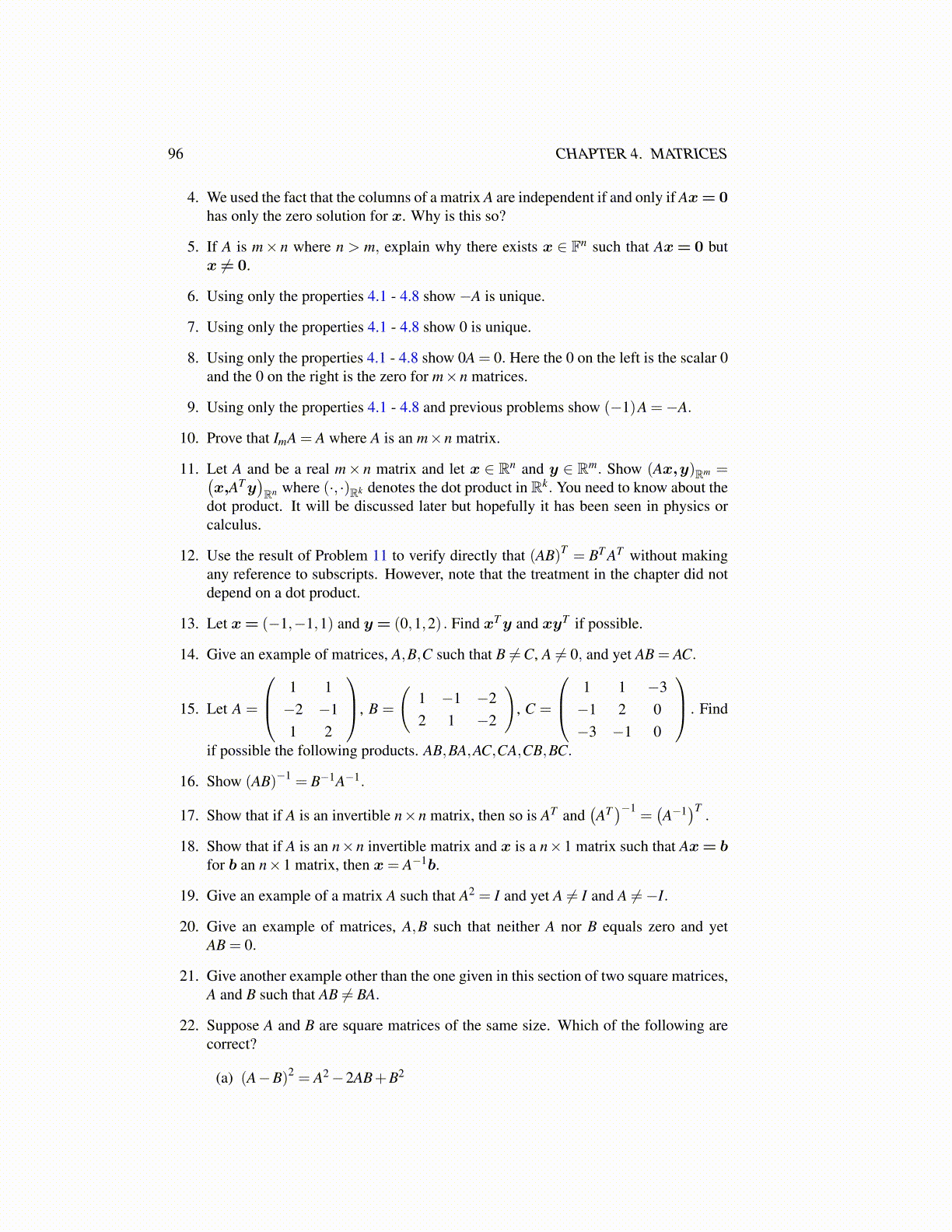
96 CHAPTER 4. MATRICES
4. We used the fact that the columns of a matrix A are independent if and only if Ax= 0has only the zero solution for x. Why is this so?
5. If A is m× n where n > m, explain why there exists x ∈ Fn such that Ax= 0 butx ̸= 0.
6. Using only the properties 4.1 - 4.8 show −A is unique.
7. Using only the properties 4.1 - 4.8 show 0 is unique.
8. Using only the properties 4.1 - 4.8 show 0A = 0. Here the 0 on the left is the scalar 0and the 0 on the right is the zero for m×n matrices.
9. Using only the properties 4.1 - 4.8 and previous problems show (−1)A =−A.
10. Prove that ImA = A where A is an m×n matrix.
11. Let A and be a real m× n matrix and let x ∈ Rn and y ∈ Rm. Show (Ax,y)Rm =(x,ATy
)Rn where (·, ·)Rk denotes the dot product in Rk. You need to know about the
dot product. It will be discussed later but hopefully it has been seen in physics orcalculus.
12. Use the result of Problem 11 to verify directly that (AB)T = BT AT without makingany reference to subscripts. However, note that the treatment in the chapter did notdepend on a dot product.
13. Let x= (−1,−1,1) and y = (0,1,2) . Find xTy and xyT if possible.
14. Give an example of matrices, A,B,C such that B ̸=C, A ̸= 0, and yet AB = AC.
15. Let A =
1 1−2 −11 2
, B =
(1 −1 −22 1 −2
), C =
1 1 −3−1 2 0−3 −1 0
. Find
if possible the following products. AB,BA,AC,CA,CB,BC.
16. Show (AB)−1 = B−1A−1.
17. Show that if A is an invertible n×n matrix, then so is AT and(AT)−1
=(A−1
)T.
18. Show that if A is an n×n invertible matrix and x is a n×1 matrix such that Ax= bfor b an n×1 matrix, then x= A−1b.
19. Give an example of a matrix A such that A2 = I and yet A ̸= I and A ̸=−I.
20. Give an example of matrices, A,B such that neither A nor B equals zero and yetAB = 0.
21. Give another example other than the one given in this section of two square matrices,A and B such that AB ̸= BA.
22. Suppose A and B are square matrices of the same size. Which of the following arecorrect?
(a) (A−B)2 = A2−2AB+B2